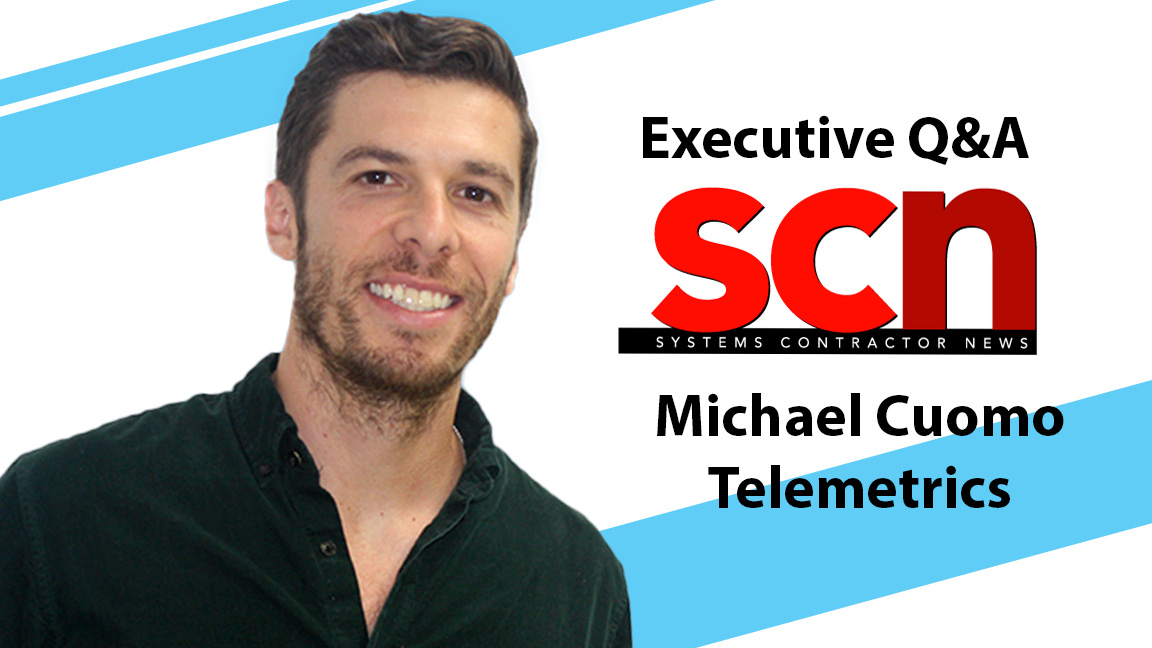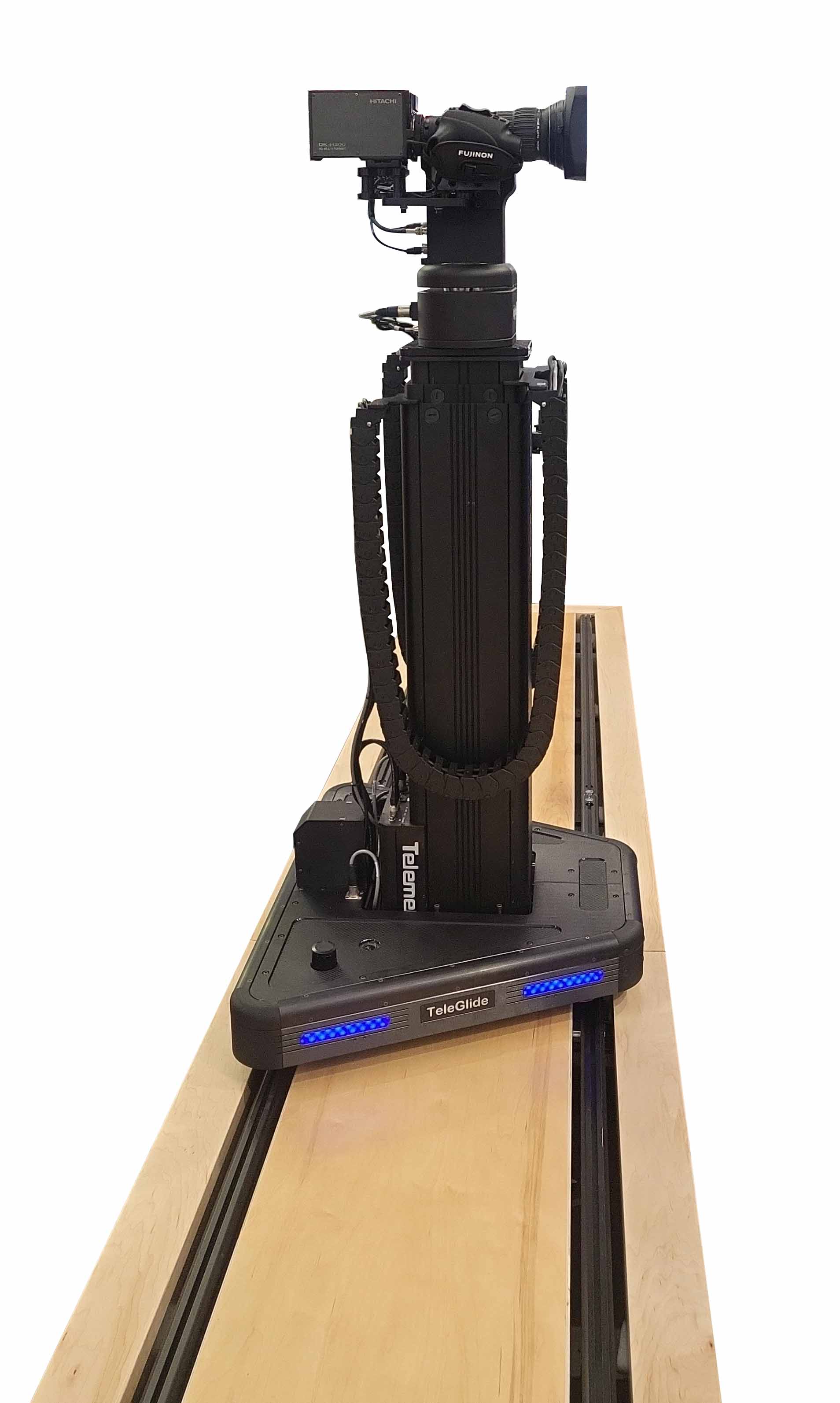Executive Q&A: Right on Track
Telemetrics VP Michael A. Cuomo corrects robotic camera misconceptions.

SCN: How is Telemetrics celebrating its 50th anniversary?
Michael Cuomo: 2023 was a year of celebrations for Telemetrics, at trade shows and elsewhere. We have also moved into a new building [in Allendale, NJ] that features expanded space for all our operations, including manufacturing, engineering, customer service, and support. The new building’s modern amenities will also include a large, state-of-the-art demonstration room for live training sessions and client demos.
Telemetrics’ history in the broadcast TV production industry started with my grandfather, company co-founder Anthony C. Cuomo, and his pioneering work on the development of CRT tube technology and early TV displays (at Dumont Laboratories), and then later Triax cable-connected camera control systems for ABC Sports as well as various news organizations. My father, Anthony E. Cuomo, serves as our current president, after decades growing the company into developing robotic camera control systems for a variety of markets.

My family, and the entire Telemetrics team, are very proud of our Golden Anniversary milestone. Only a few companies in this industry can say that. It’s been a lot of work and dedication to our customers’ needs.
SCN: What are your short and long-term goals for your company?
MC: Telemetrics has always been an engineering-first company, and we will continue to innovate and grow the business as we have for half a century. Our long-term goal is to provide cutting-edge technology that’s always been aligned with our customers’ needs, and giving them the automated workflows and specific tools they require to get the job done with the least amount of disruption to their existing operations.
[Executive Q&A: Under the Radar]
A daily selection of the top stories for AV integrators, resellers and consultants. Sign up below.
While we continue to grow the business, we have not outgrown our customers. As an independent robotics camera control company, we’re nimbler than larger ones and focus all our R&D on robotics, where others might be developing robotics as a side hobby. This allows us to innovate quickly and add new features and customized solutions as customers request them. This is done for both hardware and software upgrades across our product lines.
SCN: How has the Telemetrics control panel evolved?
MC: From our first control panel in 1985, the TM-864, to our most recent models, the RCCP-2A and RCCP-M2, Telemetrics has put a lot of R&D into making the control panel, which is at the heart of every robotic camera control system. It’s easy to operate and full of the features and capabilities customers use most. This includes RCP-level camera controls with dedicated touchscreen knobs to illuminated TeleKeys that change both color and text depending on what the operator is doing on the control panel.
I think productions today are designed around robotic cameras, and they have become an integral part of the new generation of immersive sets.
Another prominent feature is our reFrame Automatic Shot Correction technology, which is found in Telemetrics STS (Studio) and LGS (Legislative) software for the RCCP-2A robotic camera control panel.
As the first manufacturer in the industry to introduce automated facial tracking in robotic camera control systems back in 2016, the RCCP-2A with reFrame continues to improve. It now combines tools for fully automated tracking, enabling users to track live presenters as they move and turn their heads on camera. For example, if someone is not facing directly at the camera, the system will still track them and keep them perfectly centered in the frame at all times.
The reFrame tracking combines three layers of tracking parameters for a high degree of accuracy. Facial tracking allows users to identify a unique person in a group; object tracking is great because if you don’t have full facial coverage, you can still track a person; and AI helps determine control panel operator rules for the robotic cameras (e.g., over-the-shoulder left/right and two-shot framing).
SCN: As someone who has taped down his fair share of cables, how has Telemetrics solved the problem of cable management on the studio floor and above it?
MC: Cable management has always been a core feature of our product line, and Telemetrics puts a lot of time into making sure our cable management systems are safe for crews to work with. This includes unique scissoring methods for both floor and ceiling-mounted TeleGlide robotic camera track systems to keep the cables clean and organized, our pan/tilt heads with connectors on the tilt sections as well as pan sections, and cable management techniques on our Televator elevating columns to make sure cables don’t move when they go up and down.
[See How Prudential Financial Made a Smart AV Investment]
We also offer a wireless option for the OmniGlide rover that is also invaluable in the studio because there’s no cables at all to deal with. The best cable management is no cables.
SCN: How has the response been to the new TG-5 trolley you I saw last year at the NAB Show, and what makes it different from other track systems?

MC: The response to the new TG-5 robotic camera trolley has been extremely positive because we’ve leveraged a number of the safety features of our OmniGlide Roving platform studio pedestal to create what we believe is the safest and most elegant camera trolley Telemetrics has ever built. There are safety scanners at the edge of each corner of the trolley, so if a person walks across the track, built-in safety sensors will force the trolley to automatically stop. These AI sensors also help the trolley avoid collisions with set pieces.
The TG-5 also features built-in LEDs that light up to indicate if there is a person or object in its path under normal operating conditions. Lastly, the trolley is ideal for AR/VR applications, as it features a more aesthetically pleasing housing that can easily be recessed into a production studio or corporate presentation venue floor.
SCN: What’s one thing people often get wrong when they are considering robotic cameras and/or track systems?
MC: I think there are several big misconceptions. One is that these systems are being deployed to reduce staff. The second is that robotic cameras can’t be used for live, on-air performance.
Many times, robotics are used in applications where it’s just not feasible to have staff. Either the cameras are positioned in locations where it’s not safe for a human operator or camera positions are mounted on a wall or the ceiling—you just can’t have people standing there. I think productions today are designed around robotic cameras, and they have become an integral part of the new generation of immersive sets.
So, the benefit is that it’s not about reducing staff, it’s about enabling productions that would not have been possible without robotics (due to cost and space limitations). With our control systems being more intuitive than ever, and our tracking feature and reFrame server allowing a single user to track multiple cameras simultaneously, we’re enabling robotics to be used in live studios.
[Executive Q&A: Inclusion through Audio]
In addition, when used correctly, camera robotics increases production values and can make a small studio look like a big one on-screen. And you get the same consistent (favored) move every time and reduce on-air errors.

Mark J. Pescatore, Ph.D., has been the content director of Systems Contractor News since 2021. During his career, he's hosted and programmed two ongoing regional industry trade shows (including Future B2B's AV/IT Summit), produced and hosted podcasts and webinars focused on the professional video marketplace, taught more than a dozen college communication courses, co-authored the book Working with HDV, and co-edited two editions of The Guide to Digital Television.
